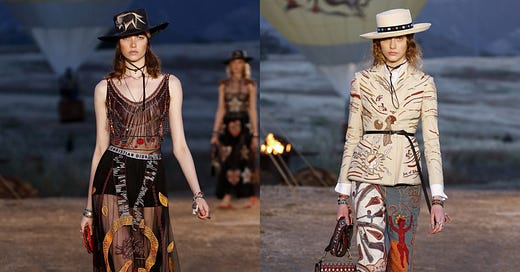To be honest — I did not see this coming.
And that’s because I failed to notice when the Dior/Tarot convergence got started in 2016. And as turns out, much has happened since.
But let’s start with a genuine milestone in Tarot history: the 2018 resort collection, in which Dior’s Maria Grazia Chiuri collaborated with Tarot le…




